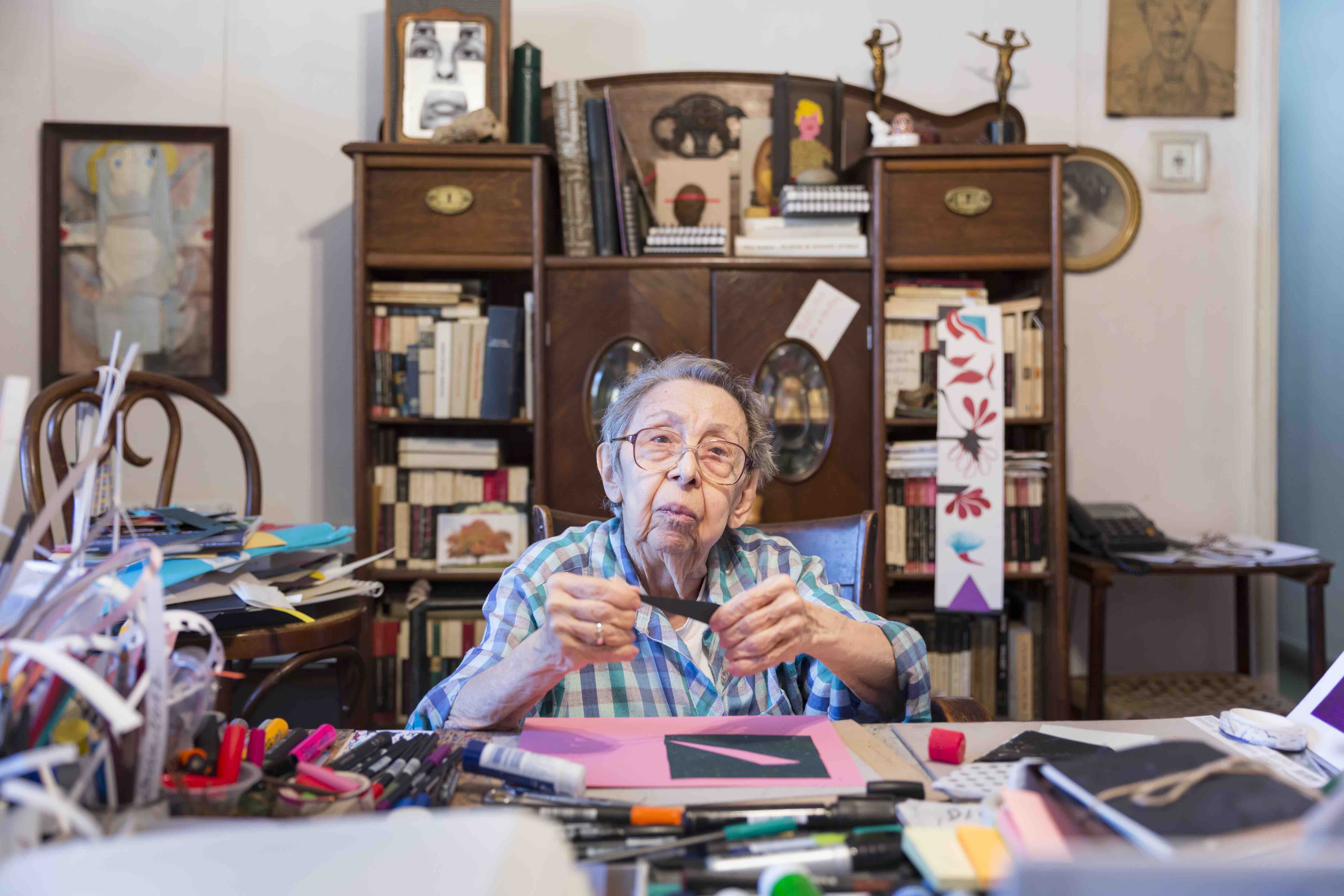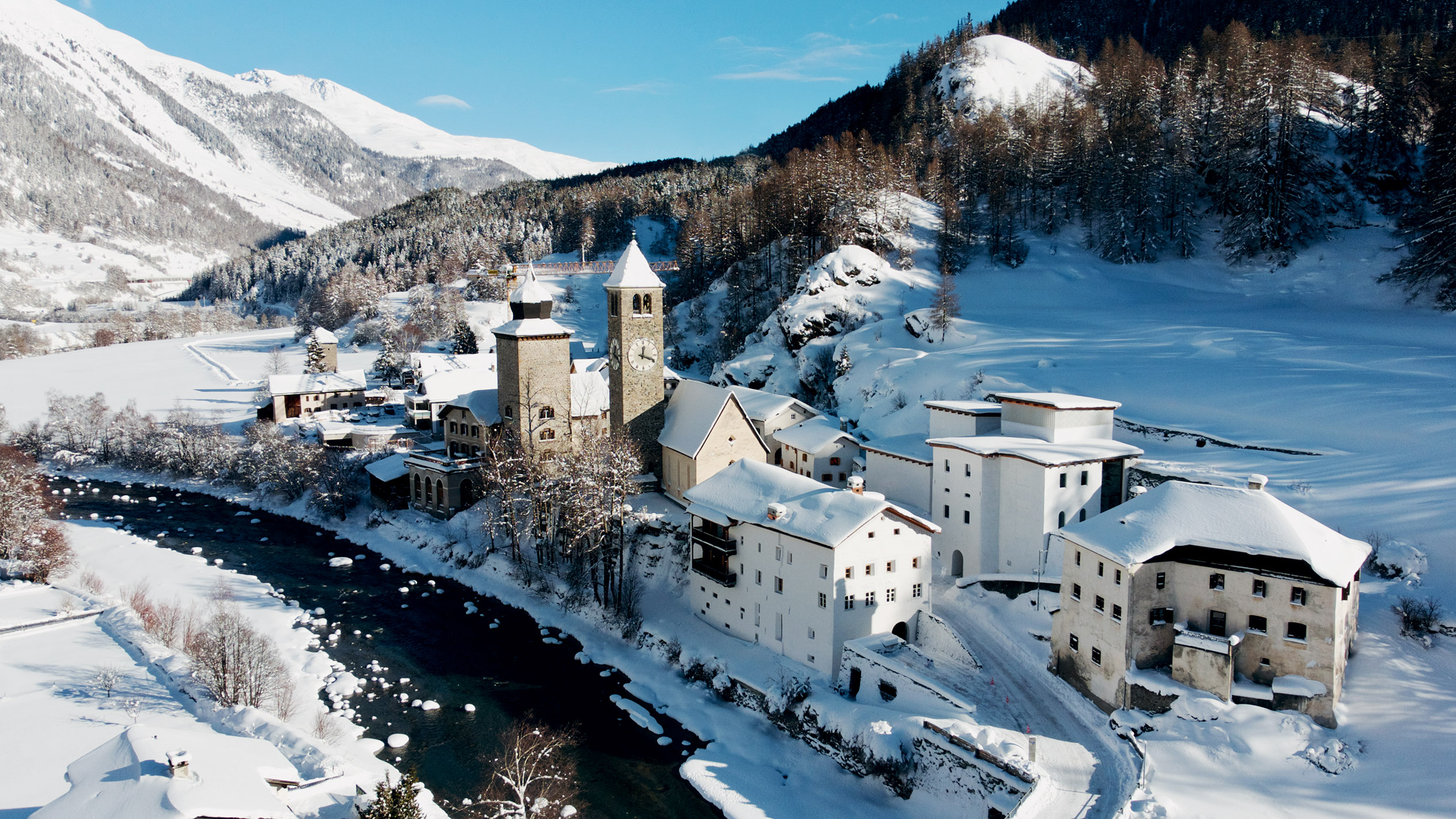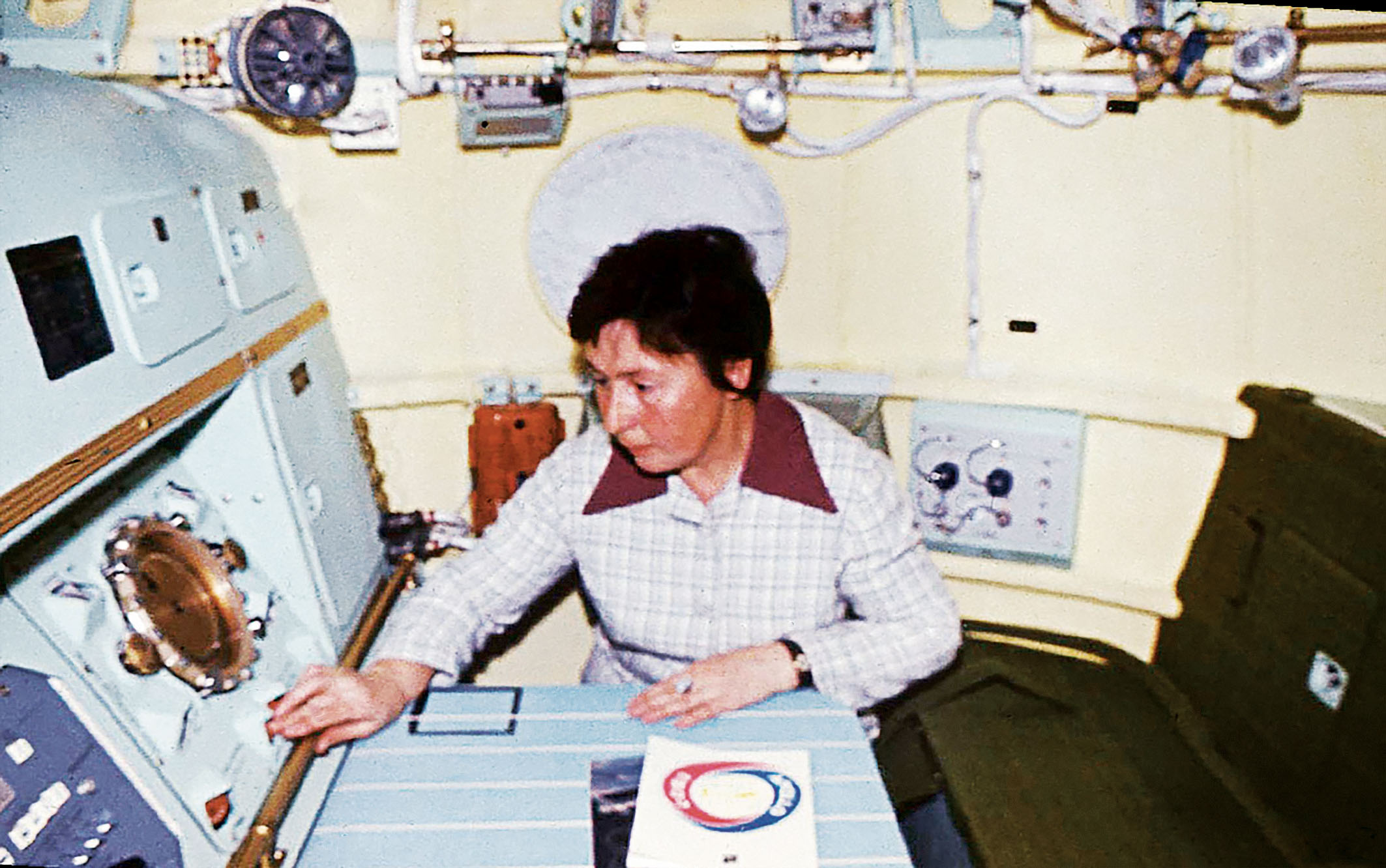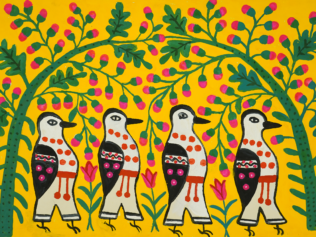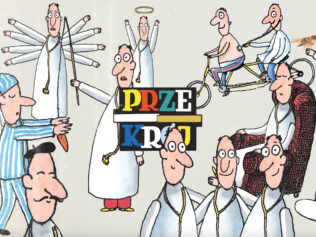
Stach Szabłowski writes about an artist who made a great impression on the “Przekrój” editorial staff during the 2017 Venice Biennale – an impression that got under our skin, and will remain there forever. Geta Brătescu really became an international star only in her eighties. That is, she would have become somebody like that, if stardom was in her nature. But what could be done, since Brătescu always prized her freedom?
About a decade ago, the global art world first discovered the identity of the Romanian artist, and then went crazy about her; with time, their interest only grew. Meanwhile, she herself was doing what she had been doing for almost seven decades. She simply worked – tirelessly and with enthusiasm – until September 2018, when she passed away at the age of 92.
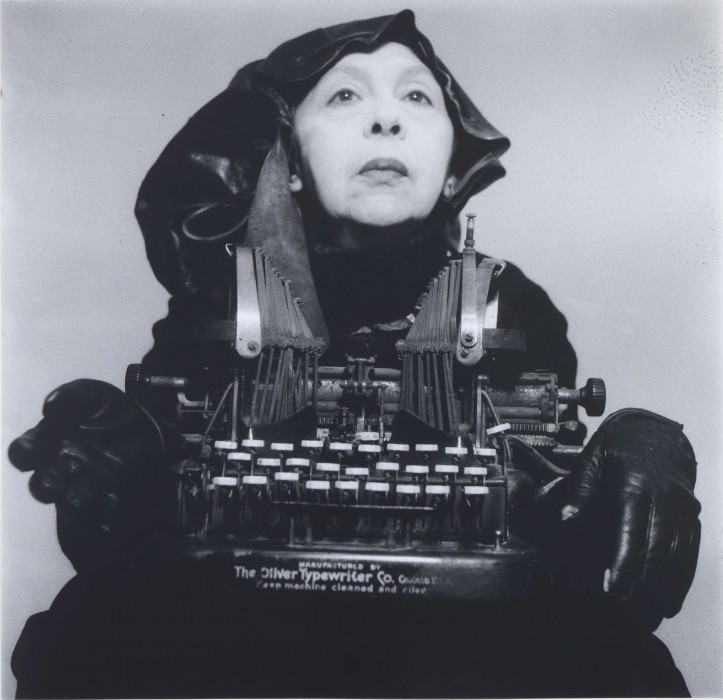
I saw Brătescu’s work for the first time in the Encyclopaedic Palace – the great exhibition that Massimiliano Gioni mounted in Venice in 2013. The charismatic curator showed artists who would have worked even if there were no galleries, museums, markets, collectors or curators in the world. Brătescu fit perfectly into this company, which included both professionals and amateurs who didn’t show any of their work while they were alive. The artists of the Encyclopaedic Palace were connected by the need to make art and the imperative to create – regardless of political circumstances, recognition, success, or the lack thereof.

Brătescu was already being compared to Louise Bourgeois, the doyenne of French art who had been working since her youth, but started her great international career only after turning 60. The art world has always loved young artists, but sometimes it turns out that those artists whose youth is eternal are even more interesting.
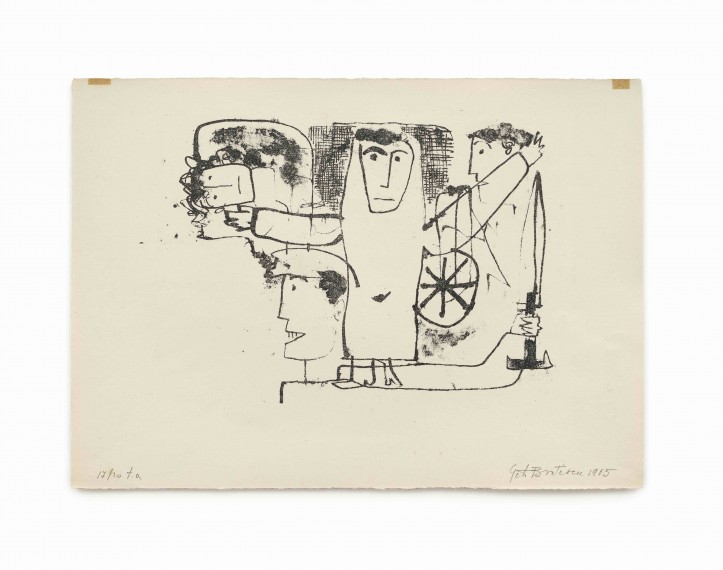
The ‘discovery’ of Brătescu in the second decade of the 21st century meant that there was a lot of ground to make up. Born in 1926, the artist had her first solo exhibition in Bucharest just after World War II, at the age of 21. Later, she disappeared from public view for some time. When the doctrine of Socialist Realism was introduced in Romania (as in all countries behind the Iron Curtain), Brătescu, then a student of painting, was expelled from art school for her bourgeois roots. She was able to join the Romanian artists’ union after the death of Stalin, finishing her interrupted studies only in the 1960s. At that time, Nicolae Ceaușescu was just stretching out on his throne – at the beginning of his regime the atmosphere was relatively liberal. It was only a trip to China and North Korea that truly opened the politician’s eyes to the scale of respect, praise and also authority that could be bestowed on a true father of the nation. As we know, the dictator followed the path of this terrible inspiration to the very end. Meanwhile, Brătescu didn’t stop working.
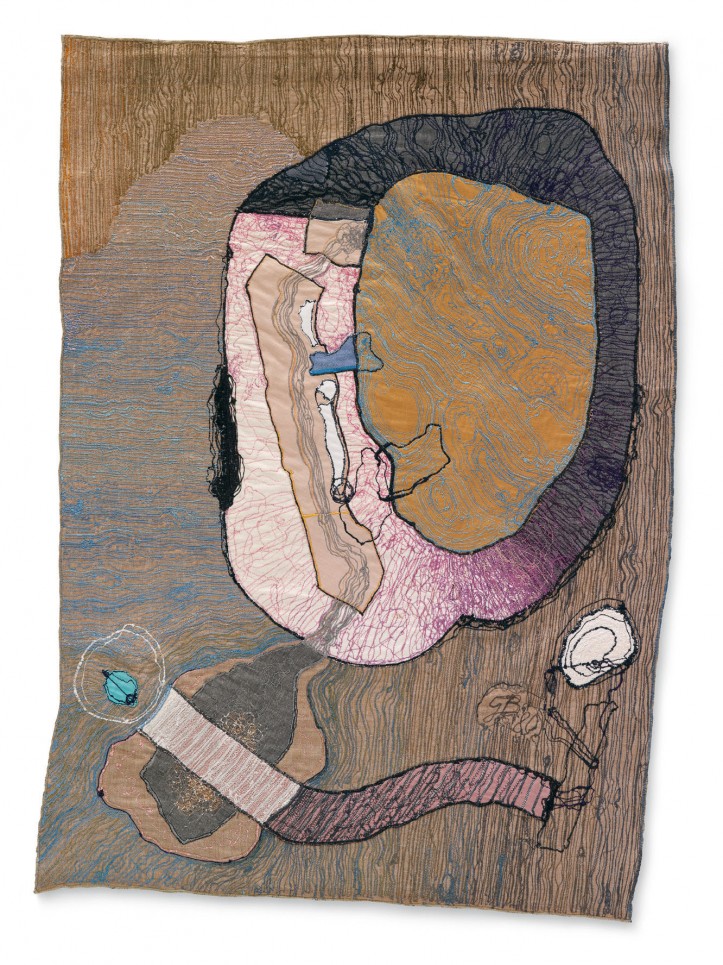
At the stage when the leader’s birthday became an official state holiday (and his dog was being driven around Bucharest in a limousine with flashing lights), the life of Romanian artists, especially those who weren’t working on the apotheosis of the dictator, was not easy. But unlike the majority of artists from her generation, Brătescu never presented herself as a ‘victim of the regime’. She was the artistic director of the art magazine Secolul XX (20th Century; after 2000 the name was of course changed to Secolul XXI), which even during the worst years of the dictatorship was able to maintain a high standard, as demonstrated by its receipt of numerous international awards. And she had her studio. In Brătescu’s universe, the studio meant everything – the entire world. From the 1940s onwards, she used it to produce paintings, collages, textiles, embroidery, sculptures, experimental films, photographs, and most of all, drawings, because although Brătescu’s work was exceptionally diverse in terms of genre, it was drawing that the artist considered to be the most important of the arts.
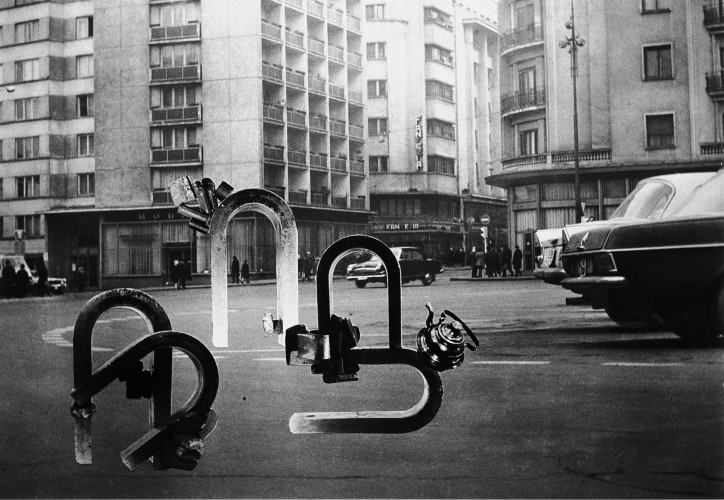
Her studio was the scenery documented on photographs of performances; the theatre of the imagination; the forge of myths; the workshop where the artist was able to create new worlds from scraps of the ordinary, snippets of clothing, pieces of paper, random photos. She managed to create these new worlds even with her eyes closed (literally). A collection of worlds created this way appeared at the Venice Biennale in 2017 in the Romanian pavilion, where Brătescu’s work was celebrated under the title Apparitions. These and other apparitions of hers received a huge variety of interpretations. Her works were placed in feminist, political, conceptual and performative contexts. Brătescu never subscribed to any of them, saying that ‘isms’ bored her. She was not only a great visual artist, but also an outstanding writer. Still, the mission of reading her works was left to others. In her final years, she only rarely left her studio, stressing that she didn’t regret this at all, because she had seen and experienced everything she needed for her works, to which she devoted all of her time, until the end.
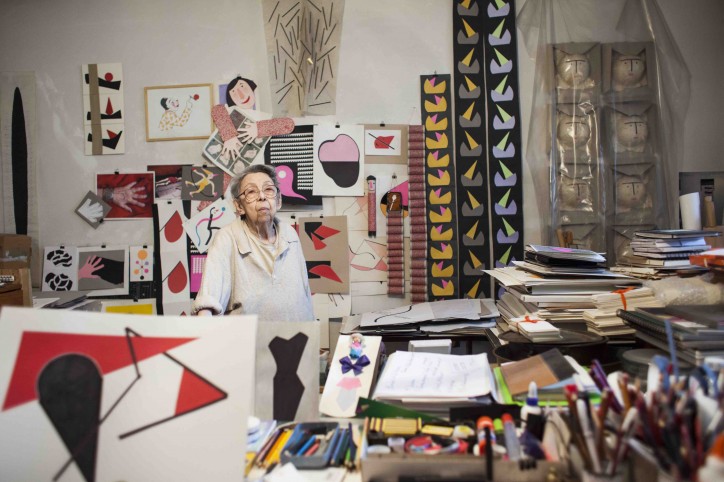
“The studio is a space of freedom, where there exists only one limitation: whether you can do something well,” she said. “The mystery of art is simple: art is form.” Of course, in this simple mystery there are hidden a countless number of other mysteries, but in the world of art, where there is so often more discourse than work and form, Brătescu’s approach – calling for less talking and more doing – was refreshing as a return to roots. Dan Perjovschi, a Romanian artist who in reality is significantly younger than Brătescu, but has enjoyed the status of an international star incomparably longer, summed up the Brătescu phenomenon perfectly, saying that “Geta is one of us, and at the same time she’s outdone us all.”


